By Pat McTaggart
On July 4, 1942, the men of newly promoted Field Marshal Erich von Manstein’s Eleventh Army celebrated the capture of the last Soviet bastion in the Crimea.
Sevastopol: Hard-Won German Victory In The East
Since September 24 of the previous year, von Manstein’s German and Romanian battalions had fought a stubborn Russian opponent for control of the peninsula. The forts surrounding the port of Sevastopol had withstood the fire of 14-inch howitzers and 17-, 24-, and 31.5-inch siege guns and had fallen only after costly frontal attacks by German assault troops.
Von Manstein had little time to celebrate with his men. His headquarters was soon moved north to an area near Leningrad, where Hitler hoped that the victor of Sevastopol could repeat his Crimean performance. After a few months, however, the headquarters was disbanded and von Manstein was assigned to the Stalingrad sector, where he was charged with stopping the Soviet attack that threatened to shatter the German front in southern Russia.
Germans Tasting Victory
In the Crimea, the occupation troops had followed the advance of German forces into Stalingrad and the Caucasus with pride and anticipation. With the capture of “Stalin’s City” and the Caucasian oil wells, the war would surely be over soon. Newspaper headlines and German radio were already declaring victory in southern Russia, and the Crimean garrison had little doubt that victory was close at hand.
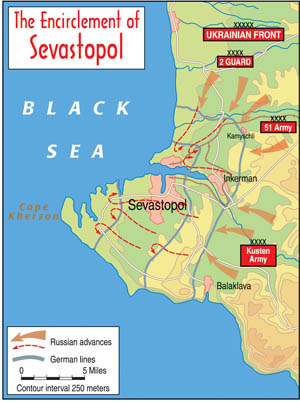 Although the peninsula seemed to have been relegated to the backwaters of the war, there was still work to be done by the Germans and their Romanian allies. Airfields had to be guarded against sporadic attacks from partisan groups, and the ports along the Black Sea had to be maintained to support the troops advancing toward the Eurasian border.
Although the peninsula seemed to have been relegated to the backwaters of the war, there was still work to be done by the Germans and their Romanian allies. Airfields had to be guarded against sporadic attacks from partisan groups, and the ports along the Black Sea had to be maintained to support the troops advancing toward the Eurasian border.
The tide of battle suddenly changed when the Soviets launched their own Stalingrad offensive on November 19, 1942. Within months, the mighty Sixth Army of Field Marshal Friedrich Paulus was destroyed, sacrificed by Hitler in a futile attempt to hold the city. South of Stalingrad, three Soviet fronts (army groups) battered the First Panzer Army and the Seventeenth Army that comprised Field Marshal Ewald von Kleist’s Heeresgruppe A (Army Group A), which had been advancing on the Caucasian oil fields at Grozny and Baku.
Soviets Push Back Nazi Forces Toward Black Sea
While the Battle of Stalingrad was in full swing, Heeresgruppe A fought for its life. The Soviets gradually pushed von Kleist’s two armies back toward the Black Sea and the Sea of Azov, threatening to cut off the Heeresgruppe by advancing on Rostov. Von Manstein, now in command of Heeresgruppe Don, later renamed Heeresgruppe Süd (South), put up a desperate fight to keep the city from falling into Soviet hands.
General Eberhard von Mackensen’s First Panzer Army managed to fight its way north and was able to escape through the narrow corridor still under German control. It was a different story for Col. Gen. Richard Ruoff’s Seventeenth Army. Both von Manstein and von Kleist argued for the evacuation, by sea if necessary, of all of the forces of Heeresgruppe A, but Hitler refused to give up the bridgehead that the Seventeenth Army occupied on the Taman Peninsula.
Even after Stalingrad, Hitler still thought that the bridgehead could be used as a point for a future drive on the southern oil fields. Thanks to his stubbornness, the First Panzer Army’s 50th Infantry Division was forced to move south and attach itself to the Seventeenth Army, which gave Ruoff needed infantry reinforcements. By the end of March 1943, Ruoff had established a defensive line that stretched from east of Novorossiysk north to the Sea of Azov.
A Stubborn Hitler Ties Down Seventeenth Army
The Germans on the Taman Peninsula held their positions throughout the summer and early fall of 1943. Although Ruoff’s men did tie down a considerable number of Soviet forces, the divisions of the Seventeenth Army could have been better used in the critical battles in the Donets Basin that raged during the first half of the year.
On June 25, General Erwin Jaenecke assumed command of the Seventeenth Army. Born in 1890, Jaenecke had served on the Eastern Front since February 1942, first as the commander of the 389th Infantry Division and then as commander of the IV and LXXXII Army Corps. He arrived at a critical time for both German and Russian forces on the Eastern Front.
The great German offensive at Kursk, which began on July 5, occupied the Red Army for the first half of the month. When Hitler, nervous about the Allied landings in Sicily, called off the attack, the Soviets gained some much- needed time to replenish their depleted armies before beginning their own offensive in the area. While the Kursk offensive was in full swing, the German forces on the Taman Peninsula, far from the main fighting in the north, repulsed some probing attacks from General I.E. Petrov’s North Caucasus Front, but no major damage was caused to the defensive line.
Soviets Regroup For Large Offensive
The German failure at Kursk gave the Red Army the opportunity to take the offensive on the Eastern Front once and for all. Recovering quickly from the huge losses of men and materiel suffered in July, the Soviets prepared to launch a series of attacks designed to batter the German lines from Smolensk to Rostov. By mid-August, all was ready. The offensive began in the last week of August with a series of staggered attacks across the front. The German High Command was kept off balance as Russian forces struck toward Smolensk and Briansk in the north, Kiev in the center, and Dnepropetrovsk and Kherson in the south.
While Jaenecke’s Seventeenth Army sat impotently in the Taman, General R.I. Malinovsky’s Southwest Front struck the First Panzer Army near Izyum, while General F.I. Tolbukhin’s South Front hit the newly reconstituted Sixth Army, commanded by Col. Gen. Karl Hollidt, along the Mius River. Within days, calls for reinforcements were coming in from all sectors of the front, but there were few to be had.
Appeal For More Divisions & More Empty Promises From Hitler
On August 25, an aircraft carrying the operations officers of the Sixth Army and the First Panzer Army arrived at von Manstein’s Heeresgruppe Süd headquarters to present a proposed withdrawal of German forces to new lines farther to the west. In turn, von Manstein went to Hitler’s headquarters at Vinnista and bluntly told the Führer that the Donets Basin could not be held unless reinforcements totaling at least 12 divisions were immediately sent to the Heeresgruppe.
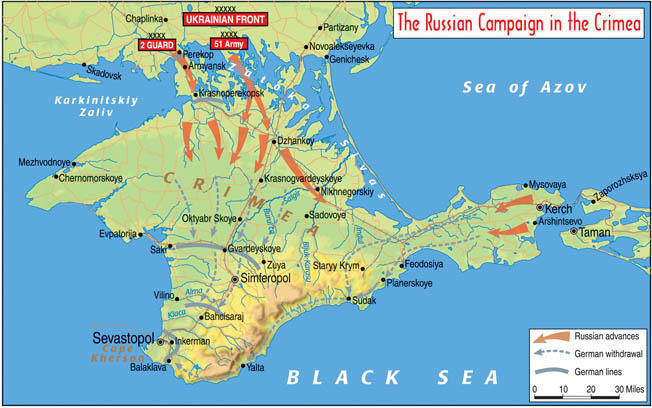 Hitler said that he would find the divisions, but von Manstein had heard those empty promises before. When the Soviet 2nd Guards Mechanized Corps broke through the lines of the Sixth Army on August 31, von Manstein ordered a general withdrawal of the Sixth Army to new lines that had been established in the west. That evening, Hitler sent word that he would give von Manstein freedom to withdraw his entire Heeresgruppe, “provided that the situation absolutely demands it and there is no possible alternative.”
Hitler said that he would find the divisions, but von Manstein had heard those empty promises before. When the Soviet 2nd Guards Mechanized Corps broke through the lines of the Sixth Army on August 31, von Manstein ordered a general withdrawal of the Sixth Army to new lines that had been established in the west. That evening, Hitler sent word that he would give von Manstein freedom to withdraw his entire Heeresgruppe, “provided that the situation absolutely demands it and there is no possible alternative.”
Logically, the next defensive stand in the south could be made only at the Dneper River. Hitler, however, refused to allow a withdrawal of that magnitude, citing severe political and economic repercussions if the entire Donets Basin was lost. Because of his stubbornness, the Germans faced Malinovsky and Tolbukhin in a poor defensive position east of the Dneper and were forced to fight a war of attrition that they could not possibly win.
Withdrawal of Seventeenth Finally Approved
On the Taman Peninsula, the Seventeenth Army finally was given permission to begin its own withdrawal. There was now no hope of using the Taman as a springboard to the Caucasian oil fields, so Jaenecke was ordered to start ferrying his men across the Kerch Straits to the relative safety of the Crimea. Although Petrov’s North Caucasus Front (soon to be reformed as the Independent Coastal Army) attempted to interfere with the evacuation, the move was completed by the first week of October.
Meanwhile, the Soviet offensive to the north gathered steam. By the end of September, Tolbukhin’s 4th Ukrainian Front had reached the outskirts of Melitopol, about a hundred miles northeast of the Perekop Isthmus, the gateway to the Crimea. Soviet armies were also within reach of Dnepropetrovsk, Kiev, Gomel, and Vitebsk, and had already liberated Smolensk.
With the Seventeenth Army released from the senseless occupation of the Taman Peninsula, von Manstein now had a fairly potent pool of reserves. He asked Hitler for use of most of Jaenecke’s divisions to shore up the front, but his request was steadfastly refused. The Seventeenth Army would stay where it was to prevent the fall of the Crimea.
Hitler’s Crimean Obsession
Since the opening stages of the Russo-German conflict, Hitler had been obsessed with the Crimea. The Romanian oil fields, on which the Wehrmacht depended to fuel its divisions, were within range of Crimean air bases. Hitler often referred to the Crimea as an “unsinkable aircraft carrier,” and once it was in his hands, he would not let it go.
Once it was clear that the Seventeenth Army was not going anywhere, Jaenecke put his men to work. The Crimea presented formidable obstacles to an invader, as was borne out in the German conquest of 1941-1942. An attack from the mainland had three possible avenues of advance. The Perekop Isthmus, only four to five miles wide, was the most likely approach. It still contained Soviet defensive works that had been overrun in 1941, and Jaenecke wasted little time in sending engineering units to make them battleworthy again.
Relying On Past Experience For Defense Of Crimea
The other two routes crossed a saline marsh east of Perekop known as the Sivash. Neither had been particularly useful during the 1941 German advance, and Jaenecke doubted that they would be of much use to the Soviets. Even so, the German general sent construction units to erect barricades and strongpoints in the area. The old Soviet forts that had been destroyed during the siege of Sevastopol had lain deserted for more than a year, but Jaenecke also saw to it that work began on repairing those structures.
On the mainland, things became progressively worse for the Germans. By mid-October the Soviets had occupied virtually all of the Donets Basin. This gave them an economic boost with the grain and cattle that were recovered in the area. It also gave the Red Army a new source of replacements for its depleted divisions.
Soviets Conscript New Fodder
As soon as a town or city was reoccupied, the civilian men were immediately given a uniform and a rifle and were sent to the front, where they were expected to quickly master the art of war or die. This method of conscription replaced tens of thousands of casualties that had been suffered in the previous fighting. With that extra force, the Red Army was able to push the Germans west, across the Dneper River.
The Dneper, the second largest river in the Soviet Union, offered one of the best natural defensive positions in European Russia, especially for a defender dug in on the western bank, which was higher than the eastern bank. If the western bank had been adequately fortified, as von Manstein had suggested, the river would have presented a formidable barrier for the attacking Soviets.
Fortunately for Malinovsky and Tolbukhin, Hitler had refused to fortify the area, stating that a strong defensive line in the rear would only give his soldiers a reason not to fight for every inch of the Donets Basin. This peculiar logic spelled disaster for the German forces in southern Russia, just as it would for other German armies all along the Eastern Front.
Soviet Generals Prepare Four-Front Assault
During the first week of October, while Soviet forces were regrouping for an assault across the Dneper, Malinovsky’s Southwest Front and Tolbukhin’s South Front became the 3rd and 4th Ukrainian Fronts. With replacements and equipment, the two generals were almost ready to resume their offensive. Malinovsky’s 3rd Ukrainian Front was charged with crossing the Dneper in the First Panzer Army’s sector, while Tolbukhin’s 4th Ukrainian Front would hit Hollidt’s Sixth Army (now under control of von Kleist’s Heeresgruppe A), which was anchored on the coast of the Sea of Azov.
The Sixth Army did not have the benefit of the Dneper barrier, the great river angles to the southwest just below Zaporozhye, which was in the sector held by the First Panzer Army. To keep the front straight, and to protect the Crimea, Hollidt was forced to hold an area that was nothing more than a desolate steppe with little in the way of cover or natural defenses.
The storm broke on October 9, when more than 400 Soviet artillery batteries brought a rain of deadly steel down upon Hollidt’s Sixth Army. The front was held by 13 German divisions (including two Panzer and two rather unreliable Luftwaffe Field Divisions) and two Romanian divisions. To break the Sixth Army’s back, Tolbukhin had a total of 45 rifle divisions, three tank corps, two guards mechanized corps, and two guards cavalry corps. His 800 tanks outnumbered Hollidt’s 83 panzers and 98 Sturmgeschütze (assault guns) by a ratio of more than four to one.
Germans Fail To Hold Melitopol
Taking Melitopol was Tolbukhin’s first order of business. His 51st Army, supported by the 28th Army, attacked on a 20-mile front. In savage hand-to-hand fighting, the 51st gained a foothold on the southern edge of the city on October 12. Hollidt, knowing the importance of the city, ordered that Melitopol be held at all costs, and it was not until October 23 that the area was cleared of German troops.
Since the middle of October, von Kleist and Jaenecke had watched the Soviet offensive with growing apprehension. In messages to the Oberkommando des Heeres (OKH—Army High Command), von Kleist had bluntly warned that the Seventeenth Army was in danger of being cut off and that it was time to evacuate the entire Crimean Peninsula. The replies that he received from Army Chief of Staff Col. Gen. Kurt Zeitzler showed von Kleist the irrational atmosphere that had permeated to the highest levels of the German Army. Simply put, Zeitzler said that evacuation was impossible because Hitler “would not allow the word ‘Crimea’ to be mentioned in his presence.”
The Relentless Soviet Advance
On October 25, the 51st and 28th Armies burst out of Melitopol, scattering German and Romanian forces before them. Their objective was twofold: split the Sixth Army in half and cut off the Seventeenth Army in the Crimea. The Soviets moved purposefully, brushing aside the enemy and driving relentlessly toward their goals.
Von Kleist sent another brutally honest message to OKH on October 26. He told Zeitzler that the situation in the Sixth Army’s sector could not be rectified and that he was going to start evacuating units on the Kerch Peninsula that very evening, in preparation for a general withdrawal from the Crimea. This time, he was expressly forbidden to make any such move by Hitler himself, which seemed to make a serious impression on the general.
Von Kleist was not the only person pleading for the evacuation of the Crimea. Marshal Ion Antonescu, the leader of Romania, told Hitler that the loss of the seven Romanian divisions stationed there might have serious repercussions within his country. Hitler brushed Antonescu’s concerns aside, falling back on his old arguments about the Crimea being used by the Red Air Force to bomb Romanian oil wells, and the Red Army using the peninsula as a staging area for amphibious landings along the southern coasts of Bulgaria and Romania.
“You Are To Defend the Crimea!”
Meanwhile, the Soviet offensive continued unabated. Jaenecke made a final attempt to save his army on the night of October 28. The telephone conversation between Jaenecke and von Kleist reveals the conflict of emotions that tore at the two men in this time of crisis.
Von Kleist: You are to defend the Crimea!
Jaenecke: I cannot execute that order. No one else will execute it either. The corps commanders believe the same as I do.
K: So, collusion, conspiracy to disobey an order! If you cannot, someone else will command the army!
J: I report again that in the light of my responsibility for the army I cannot execute the order.
K: … This attitude only undermines the confidence of the troops. If I get one more division [for you] everything will be all right.
J: That is building castles in the air. One must deal with realities here.
K: The [Seventeenth] Army has not yet been attacked. A little reinforcement on the [Perekop] isthmus, and everything will be in order….
J: The Crimea must be defended on its entire perimeter. If the Russians attack, the catastrophe is at hand. I must recall once more the example of Generalfeldmarschall Paulus at Stalingrad.
K: The details of events there are not known…. If the commanding general, 17th Armée, does not execute the order [to defend the Crimea] he will break every rule of soldierly deportment. Will you execute the order or not?
Too Late For the Seventeenth Army
Jaenecke then asked for time to think about what von Kleist had said. After considering the options, especially of turning over his army to someone who was not fully aware of his troop dispositions and their strengths and weaknesses, Jaenecke gave in. He would try to defend the Crimea as best he could, but in any case, it was already too late for the Seventeenth Army. By the end of the month, Tolbukhin’s armies had already achieved their objective. The Crimea was now cut off from the German forces on the mainland.
When the gate to the Perekop Isthmus was slammed shut by the 4th Ukrainian Front, the Seventeenth Army consisted of three regular German Infantry Divisions (50th, 98th, 336th) and the 153rd Training Division. There were also three Romanian mountain divisions (1st, 2nd, 3rd), two Romanian cavalry divisions (6th and 9th), two Romanian infantry divisions (6th and 19th) and the 1st Slovakian Division. The mix of divisions would change somewhat during the next few months, but it would always be an army dominated by Romanian divisions.
Stark Class Divisions Within Romanian Army
There was no doubt that the Romanian soldier was a brave fighter, as was shown during the 1942 conquest of the Crimea. The problem lay in leadership, class distinction, and equipment. Many of the officers, some of whom performed very well, came from nobility, while most of the soldiers were peasants or workers from the cities. Officers ate better than their subordinates, and an enlisted man was constantly reminded of his “place” in the army pecking order.
Rifles and machine guns were outdated, and most artillery units were based around the 75mm gun or howitzer, although some units had a few 100mm and 105mm weapons. The Romanian Army might have been able to hold its own against the Red Army of 1941, but against Soviet forces in late 1943 it was hopelessly outmatched.
Even though the Seventeenth Army was cut off from the mainland, the Kriegsmarine (German Navy) kept the Crimea supplied. Grand Admiral Karl Dönitz guaranteed that his forces in the Black Sea would deliver at least 50,000 tons of supplies a month. Supply convoys made the trip on a regular basis, escorted by German E-boats and Romanian destroyers. The Soviet Black Sea Fleet was nowhere to be seen, its heavy ships being kept safely in Caucasian ports for fear of being attacked by the Stuka dive-bombers of Lt. Gen. Paul Deichmann’s I Fliegerkorps. Without control of the air over the Crimea, the Soviets were virtually helpless in interdicting the naval lifeline of the Seventeenth Army.
Resupplied German Army Manages To Hold On
As the war on the mainland moved steadily westward, Tolbukhin was forced to leave two armies to keep the Crimea sealed. Another Soviet army was also stationed on the Taman Peninsula. In November, the Soviets attacked German and Romanian positions at Perekop, while the army in the Taman made a sea landing in the Kerch area. Although advances were made in the Sivash and a beachhead was established in the Kerch area, both penetrations were sealed off by Jaenecke’s divisions.
Supplies continued to arrive from the port of Odessa and, to a lesser extent, from the Romanian port of Constanta, and the Luftwaffe was able to bring in reinforcements and evacuate the wounded by using the huge six-engined Me-323 Gigant transport planes. These aircraft could carry 60-80 troops or 39,600 pounds of supplies. For the time being, the Crimea would remain safely in German hands.
False Security Overcomes Seventeenth Army
While the rest of Heeresgruppe A fought for its life during the winter of 1943, the men of the Seventeenth Army were, for the most part, left in peace. A sense of false security gradually spread through the ranks, and the rebuilding of destroyed Soviet fortifications slowed to a crawl as engineer units were ordered to other duties.
The men of the infantry divisions found themselves with little to do except combat the boredom of their daily routines. At Jaenecke’s headquarters, various plans were worked out for the evacuation order that must surely come, but the malaise that affected the junior officers and men was already spreading to higher headquarters as weeks of inactivity turned to months. The Luftwaffe and Kriegsmarine were both active in ferrying supplies and keeping the Black Sea Fleet bottled up, but for the army, there was little to do but wait.
In January and February 1944, the Soviets launched a major offensive against the Sixth Army at Nikopol and Krivoi Rog. After these successful operations, Malinovsky’s 3rd Ukrainian Front continued to hammer the Sixth Army, taking Kherson and forcing Hollidt’s men back to a line on the Bug River. The Bug position did not last long, and by the end of March Soviet forces were already crossing the river and heading for Odessa.
A Furious Hitler Begins Sacking Generals On Eastern Front
Hollidt was ordered to hold the city at all costs. The remnants of a few battered German and Romanian divisions attempted to form a ring around the city, but the Soviets were already knocking at the door. Hitler, furious about the collapse in southern Russia, had already sacked von Manstein on March 30. Von Kleist went the following day, replaced by Col. Gen. Ferdinand Schörner (Hitler also renamed Heeresgruppen Süd and A, changing them to Heeresgruppen Nordukraine and Südukraine). Hollidt was the next to go, replaced “for reasons of health” during the first week of April by General Maximilian de Angelis.
Jaenecke had escaped Hitler’s wrath for the moment. Thanks to a steady flow of supplies and reinforcements, his Seventeenth Army now had five German infantry divisions (50th, 73rd, 98th, 111th, and 336th) and two assault gun brigades in addition to the seven Romanian divisions that were still on the peninsula. On April 7 Schörner paid a visit to the Crimea, inspecting Jaenecke’s defenses and declaring that the peninsula could be held “for a long time,” before flying off to his own headquarters. That same afternoon, the Soviets attacked.
Soviets Unleash On Germans and Romanian Divisions
General Y.G. Kreizer’s 51st Army hit the 10th Romanian Infantry Division in several areas, probing for weak points in the front facing the Sivash. Brigadier General Constantin Testioreance’s men barely held on to their positions during the night. The following morning, the full weight of the 51st Army fell upon the terrified Romanians and their German neighbors.
The Perekop Isthmus was held by General Rudolf Konrad’s IL Mountain Corps (50th, 111th, and 336th Infantry Divisions, 10th and 19th Romanian Infantry Divisions, and the 9th Romanian Cavalry Division). At about 9 am on April 8, Konrad’s line was rocked by a heavy artillery barrage. Immediately following the bombardment, Kreizer’s III Corps (1st Guards Rifle, 10th and 63rd Rifle) stormed the German and Romanian positions. At the same time, General G.F. Zakharov’s 2nd Guards Army (13th Guards Rifle Corps, 54th and 55th Rifle Corps) hit Konrad’s Perekop positions. The two armies had a combined total of 278,000 men, supported by 347 tanks and 1,785 guns and mortars.
German and Romanian defenses were anchored in a position known as the Tartar Ditch, but the area was no longer tenable due to the overwhelming Soviet superiority. Konrad received the code word Adler (Eagle) late on the night of April 9, ordering him to withdraw. The general immediately began pulling his battered divisions out of the line and started a headlong retreat toward the Gneisenau Line, which was a blocking position that arced around the city of Simferopol and covered the main roads to Sevastopol.
An Overdue Message To Retreat
At the Kerch bridgehead, the Independent Coastal Army (formerly the North Caucasus Front) under General A.I. Yeremenko had also started probing attacks. Yeremenko had two corps (11th Rifle and 16th Guards Rifle) with 12 rifle divisions, two rifle brigades, and one independent tank brigade (135,562 men, 212 tanks, and 961 artillery pieces). He faced General Karl Allmendinger’s V Army Corps (73rd and 98th Infantry Divisions, 6th Romanian Cavalry, and 3rd Romanian Mountain divisions). When Allmendinger received the Adler message, his divisions began a 150-mile race to the Gneisenau Line, with Yeremenko’s army in hot pursuit.
The first stage of the retreat took Allmendinger’s divisions back to the Parpach Line, which stretched across the narrowest part of the Kerch Peninsula. Although suffering considerable losses from Soviet mechanized and armored units, his men made a good fight of it. German artillery, employed in the main line of resistance, caused heavy casualties among the advancing Russian men and machines, but the Parpach Line soon became untenable. With Tolbukhin’s armies advancing from the north, threatening the rear of the V Army Corps, Allmendinger had no choice but to abandon his positions and try to make it to the Gneisenau Line.
German Artillery Destroyed At Yalta Mountains
Yeremenko’s pursuit was held up by strategically placed antitank and infantry units that occupied mountain passes and important crossroads until the last minute before retreating to new positions farther west. Unfortunately for the Germans, the passes of the Yalta Mountains proved too much for their horse-drawn artillery and the big guns had to be blown up, depriving the V Army Corps of vital artillery support.
When Allmendinger reached the Gneisenau Line, he learned that the position had already been breached in the north by Tolbukhin’s troops. His men, on the brink of collapse, would have to continue retreating to the fortified area around Sevastopol. Along with this news came the ominous report that Odessa had fallen, cutting Jaenecke’s main supply link.
Attrition Takes Toll On Romanian Units
Allmendinger’s units entered the main Sevastopol defense line on April 16, joining Konrad’s IL Mountain Corps, which had occupied the northern part of the line on the 14th. During the first eight days of the Soviet offensive, the Seventeenth Army had lost 13,131 German and 17,652 Romanian soldiers. The condition of the Romanian units made them both unfit and unreliable in further combat situations, and Jaenecke recommended that they be evacuated as soon as possible.
His five German divisions were also battered. Already understrength when the Soviet offensive began, they were now little more than reinforced regiments. Jaenecke organized them into five combat groups and supported them with the assault guns, artillery, and antiaircraft guns that had survived the retreat. Meanwhile, three Soviet armies prepared for the final assault.
Another Plea For Retreat
It was now up to the German commanders to make another case for the evacuation of the Crimea. Since the Seventeenth Army held only a small portion of the peninsula, both Schörner and Jaenecke argued that it was useless to sacrifice even five understrength divisions in a futile effort to remain there.
OKH had already agreed that transport units, prisoners of war, and other nonessential personnel could be ferried across the Black Sea to Romania, and more than 67,000 had already made the trip. The Luftwaffe still kept the Red Air Force and Black Sea Fleet at bay, but the Soviets were becoming bolder.
On April 19, Schörner repeated his demand for evacuation. He told Zeitzler that Luftwaffe and Kriegsmarine losses were starting to mount, and that the Romanian units, which were useless, were already waiting to embark. His warning went unheeded. Even a personal visit to Hitler at the Berghof failed to sway the Führer. After listening to Schörner, Hitler promised reinforcements for the Crimea (a promise unkept), but ordered that no German combat troops were to be evacuated from the peninsula.
Paying For Last Years’ Inactivity
Tolbukhin was in no rush to storm the German defenses. His armies were strung out along the few usable roads on the peninsula, and there was little chance that the Germans would, or could, launch an attack from the Sevastopol line. While more divisions made their way toward the besieged port, the Soviet general and his staff worked on the plan for the final assault.
As for Jaenecke’s “Army,” the inactivity and boredom that had set in during the past year now had to be paid for. The main defensive line was in relatively good shape, but positions behind the main line of resistance were almost laughable. German doctrine called for a second and, if possible, a third line to be constructed and manned behind the main line, but they did not exist at Sevastopol. Even if there were such defenses, there were no troops to occupy them.
The German units were not in much better shape than their defenses. Allmendinger’s V Army Corps had lost all of its heavy artillery and some units, such as the 98th Infantry Division, had no entrenching tools. Thoroughly despondent, Jaenecke sent a message to Hitler’s headquarters demanding freedom of action—three words that Hitler could not stand. It was the last straw for the Führer.
More Changes In German Command
In the final days of April Jaenecke was relieved, replaced by Allmendinger. Allmendinger’s replacement was Lt. Gen. Friedrich-Wilhelm Müller. Konrad soon followed, replaced by the one-armed, one-legged General Walter Hartmann, who wore the coveted Oak Leaves to the Knight’s Cross. Changes in command, however, did little to affect the overall situation. It may have been more helpful if Hitler had kept his promise and sent reinforcements instead.
By the beginning of May, after receiving replacements and reinforcements, Tolbukhin was ready. The Independent Coastal Army had also been placed under his command, and the Soviet general now had about 470,000 men, 600 tanks, and 6,000 guns and mortars to assault the Sevastopol fortified area. The attack would be two-pronged, with the 2nd Guards Army mounting a feint assault on the northern perimeter, and the 51st Army, assisted by the Independent Coastal Army, striking the main blow in the east and southeast.
At 9:30 am on May 5, Tolbukhin began the attack with a massive artillery bombardment. About 300 guns and mortars were used to blast each kilometer of the German front. While the 2nd Guards Army kept German forces in the north pinned down, Kreizer’s 51st Army launched an attack against enemy positions in the Sapun Hills.
Red Air Force Comes Out Of Hiding
The 63rd Rifle Corps spearheaded the attack, supported by the 1st Guards Rifle Corps. As soon as the two corps punched a hole in the German line, the breach was to be exploited by the 10th Rifle Corps. The Red Air Force now made an appearance in force, strafing and bombing German positions and successfully challenging an overstretched Luftwaffe for temporary air superiority over the Crimea.
Allmendinger ordered his men to hold their ground, but it was asking too much for the battered troops. By 6 pm, the Germans had sustained about 5,000 casualties, and the line was threatening to crack in several places. On the Soviet side, Tolbukhin pressed his commanders to keep up the attack throughout the night, hoping for a decisive breakthrough.
Heavy fighting continued throughout the 7th, with German forces desperately trying to hang on to the all-important Sapun Hills, the gateway to Sevastopol from the south. It was no use. On May 8, the 63rd Rifle Corps succeeded in dislodging the last German defenders. The 10th Rifle Corps then moved forward, splitting the enemy line wide open and driving toward Sevastopol. A German counterattack failed to stop the Soviet exploitation. Schörner, knowing that all was lost, sent another signal to Hitler’s headquarters—“Request evacuation since further defense of Sevastopol no longer possible.”
Hitler Finally Relents
Finally, in the early hours of May 9, Hitler agreed. Allmendinger immediately began the evacuation of Sevastopol, which was under heavy artillery fire, and retreated to his last bastion, Cape Kherson, on the southwest tip of the peninsula. By 4 pm, the last German units had left Sevastopol, and Soviet forces began a cautious move into the city.
The German fortifications around Cape Kherson were considerably better than previous positions. Deep trenches and concrete strongpoints gave the troops a sense of safety that had been lacking in other areas of the Crimea. The narrow front also hindered the mass divisional attacks by the Soviets, who could concentrate only a few units for each assault.
On May 10, the Soviets attacked German positions seven times without success. Artillery fire pounded the remnants of the Seventeenth Army without mercy, but the strong fortifications held up under the heavy bombardment.
German Troops Ordered To Fall Back To Coast
May 11 saw renewed Soviet attacks. Knowing that the end was near, Allmendinger had already contacted Admiral Otto Schulz, the German naval commander, telling him to send all available ships to evacuate his men. A German flotilla was due to arrive after nightfall to embark the remaining troops. At 11 pm, the signal was given for all units to fall back to the coast and dig in around predesignated landing points to await the arrival of the German ships. That was when things began to go terribly wrong.
Allmendinger’s men had successfully disengaged from the main line and had made it to the beach, but the German ships were not there. Schulz had indeed arrived with his flotilla, but the radio channel that he had planned to use to guide individual ships to their loading points was being jammed. The frustrated admiral then ordered a signal sent on another channel to all ships, ordering them to gather near the mouth of Kamyshevaya Bay, just off Cape Kherson, so that they could be piloted to the embarkation points. That message, too, was lost in the airwaves.
Evacuation Blinded and Made Deaf
To compound matters, smoke drums, which were set around installations in case of air attacks, were set off by the Soviet artillery pounding the area. Others were purposely set ablaze by German units to give them more cover while they were waiting to embark. The result was a massive smokescreen that obscured docks and landing areas, making it next to impossible for the German ships to see their designated destinations.
Many of the more intrepid German skippers made it to shore despite the difficulties. Ferries, motor-torpedo boats, and some transport ships groped their way through the dense smoke to find Allmendinger’s troops and bring them to safety. In all, 31,708 of the remaining men eventually made their way safely back to Romania.
In some places, however, luck was against the Germans. Major General Erich Gruner’s 111th Infantry Division, which had arrived in the Crimea only two months earlier, did not have one major ship make it to the division’s embarkation point. As dawn broke on May 12, most of the division was still on shore, an inviting target for the Soviets.
German Division Meets Soviet Wrath
Furious that so many Germans had gotten away, the Soviets attacked the near-helpless division with tanks and infantry. When Gruner fell victim to a Russian tank shell, resistance soon ceased. Eyewitness accounts speak of German officers and Russian auxiliaries being lined up and shot after the division had surrendered, a bitter end to Hitler’s Crimean venture.
Since the Soviet offensive began in April, 31,700 Germans and 25,800 Romanians had been killed or wounded. Another 20,000 were missing in action, and several thousand more were captured. The Soviets put their losses of killed and wounded at 84,331.
“Crimea Was Our Biggest POW Cage”
The losses incurred in the Crimea can be blamed directly on Hitler’s mania for holding every inch of ground, even when that ground was no longer strategically important. Soviet troops had long ago passed the peninsula as they pushed steadily westward, and even Soviet intelligence officers were surprised, and somewhat amused, at how the Seventeenth Army had been used.
One Soviet officer, interrogating a German officer who had been captured during the fighting, made this observation: “We were in no hurry to take the Crimea. After all, it was our biggest POW cage. The Germans were virtually prisoners on the peninsula since November 1943. They guarded themselves. They supplied themselves. They went on leave and even returned by their own account.”
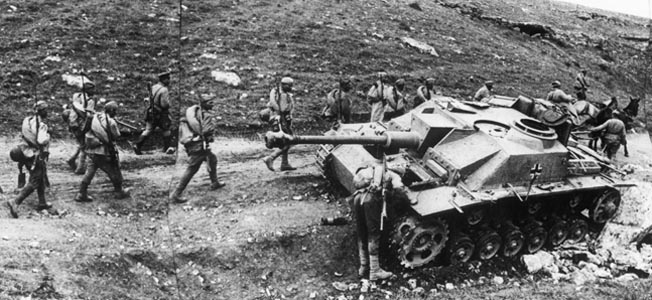
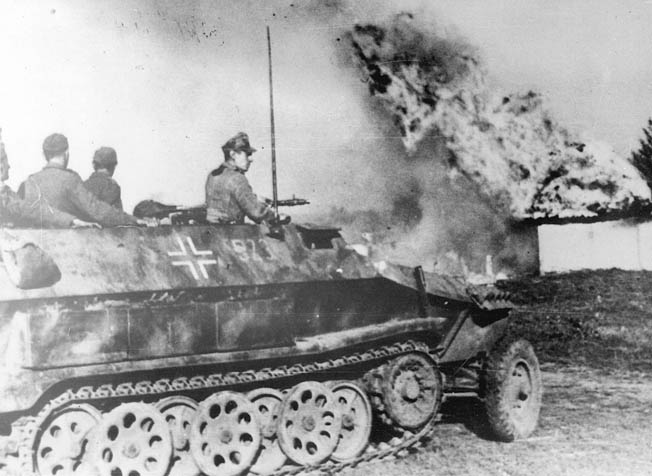
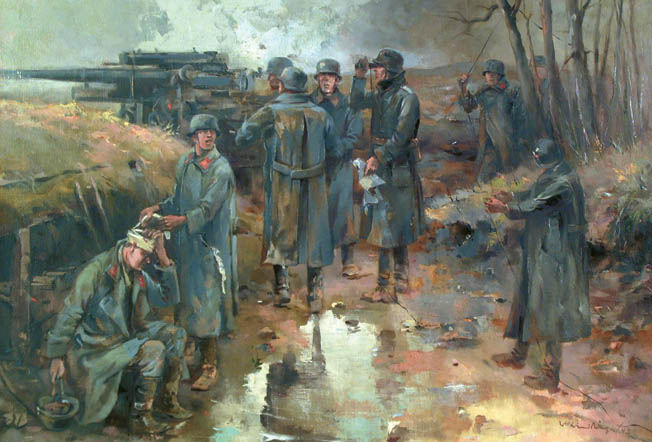
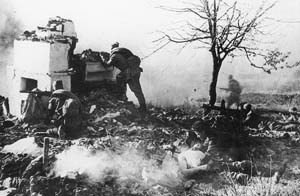
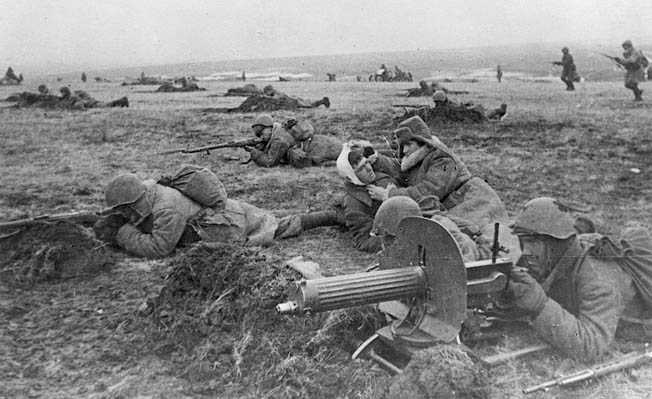
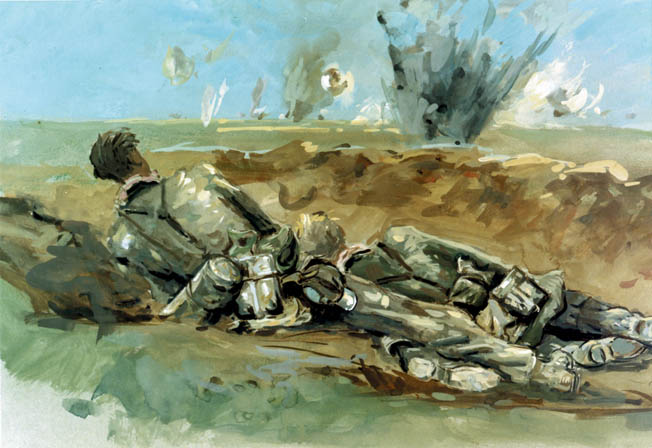
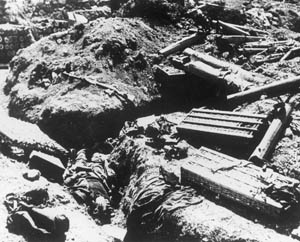
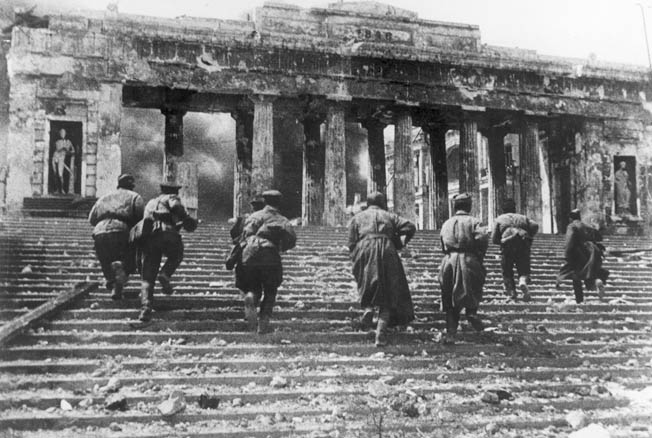
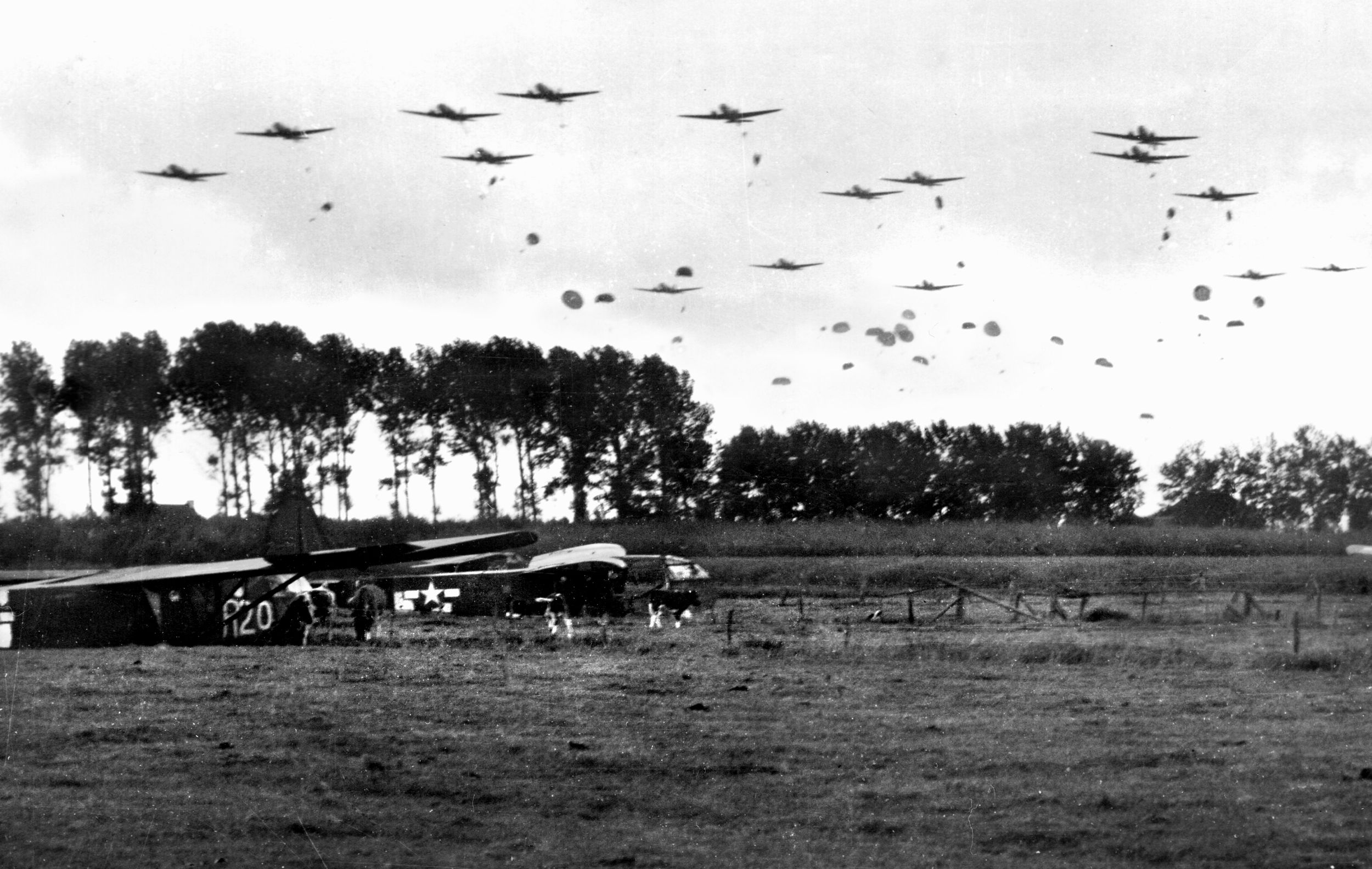
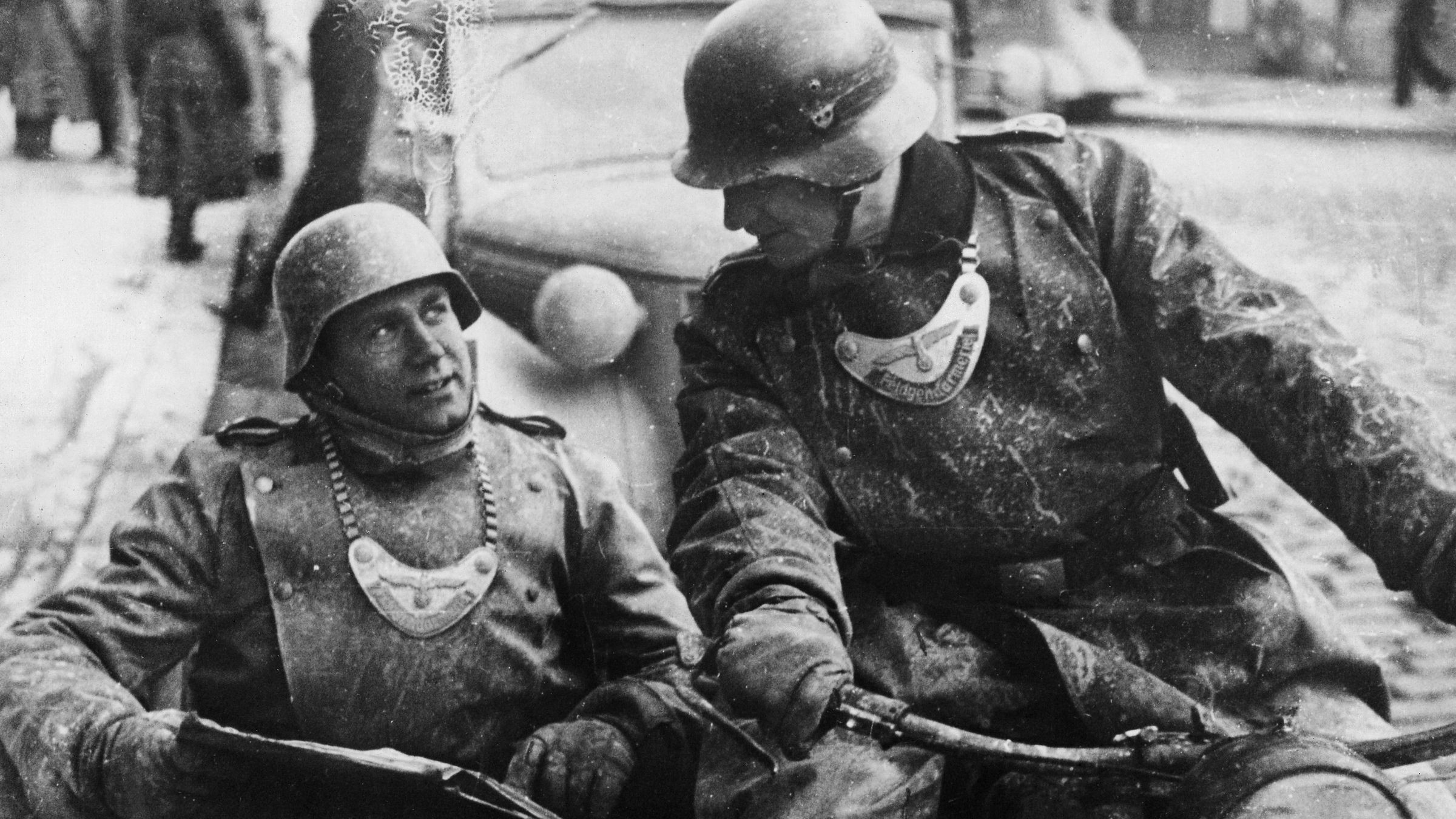
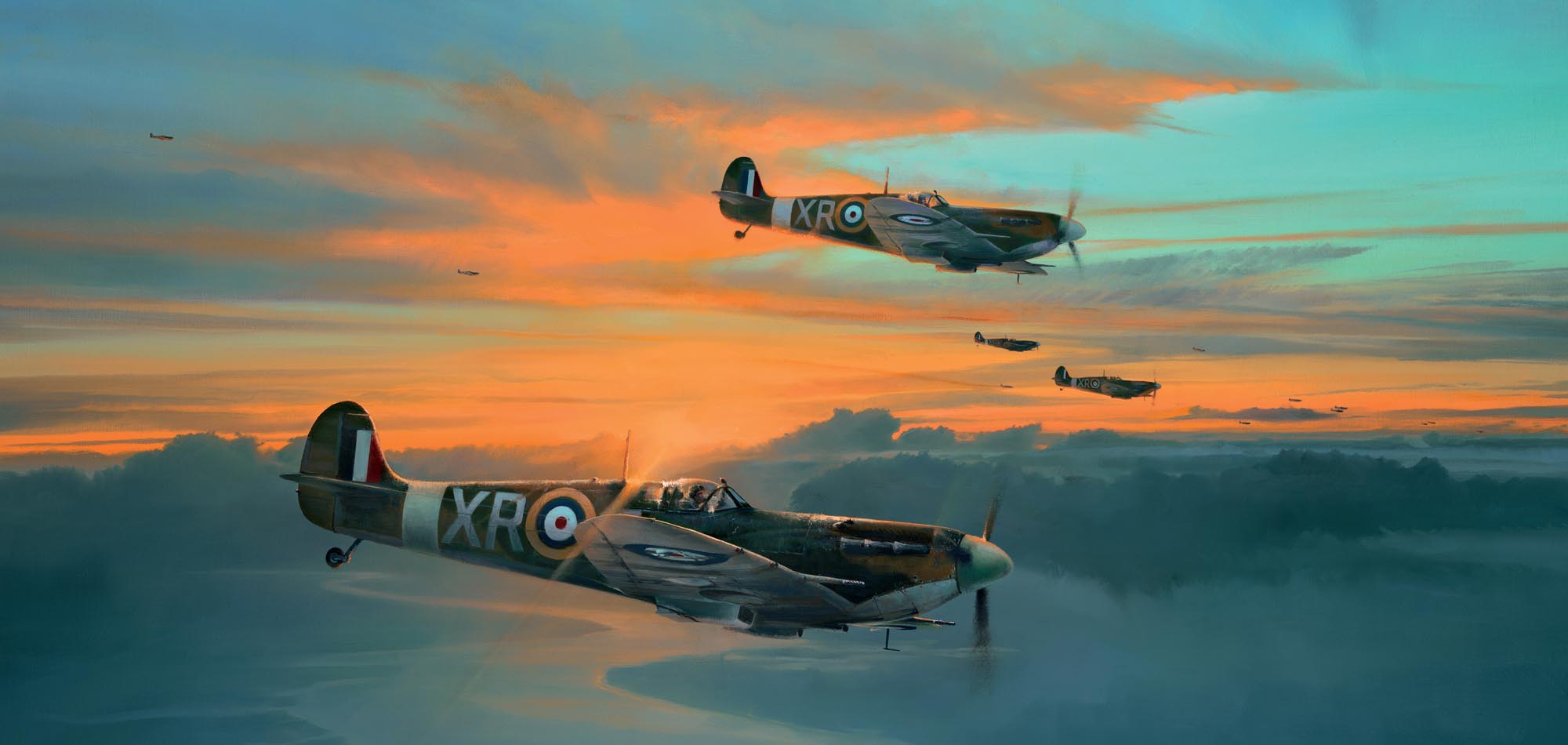
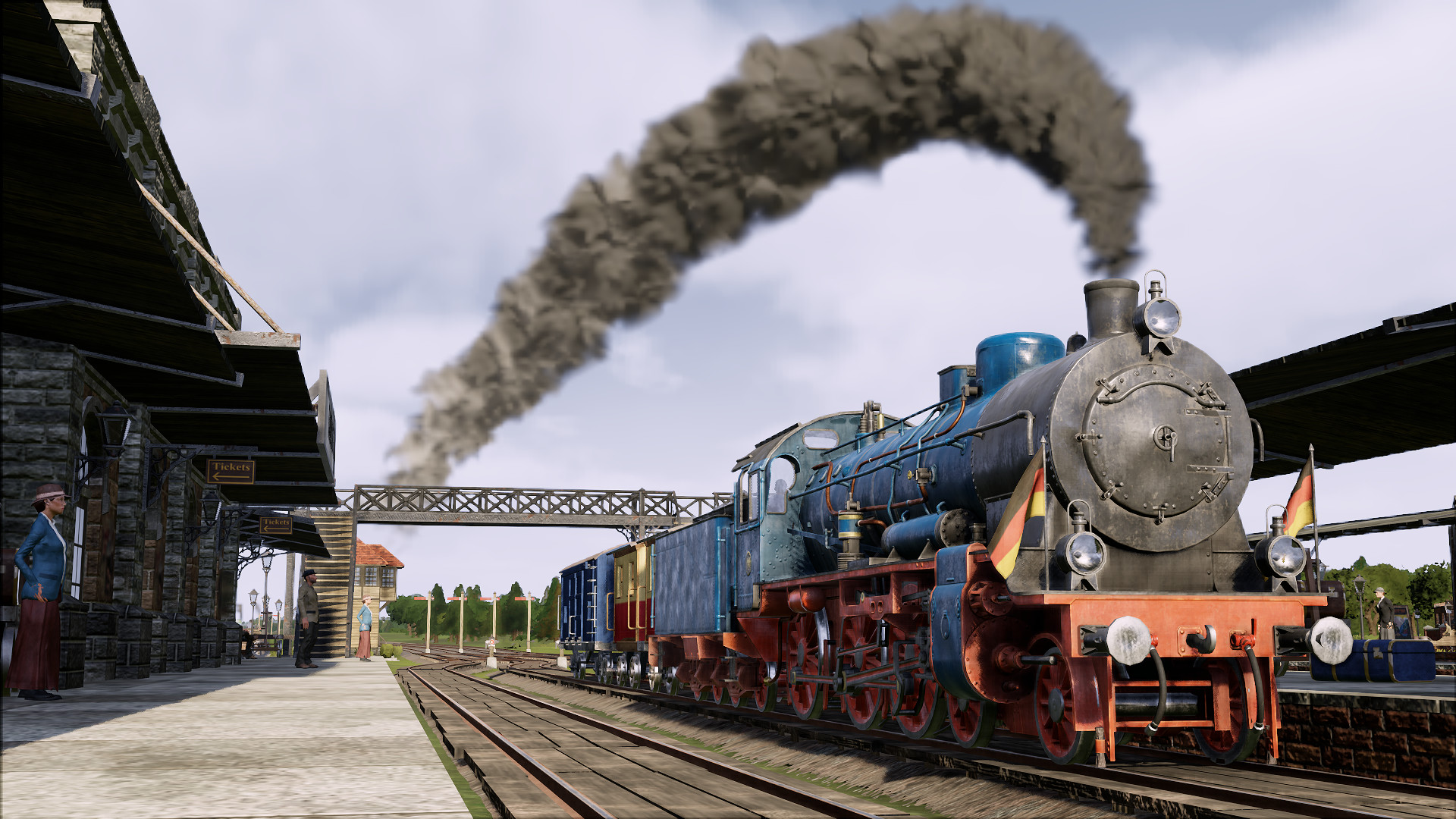
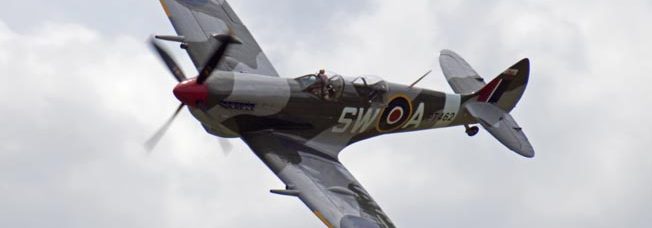
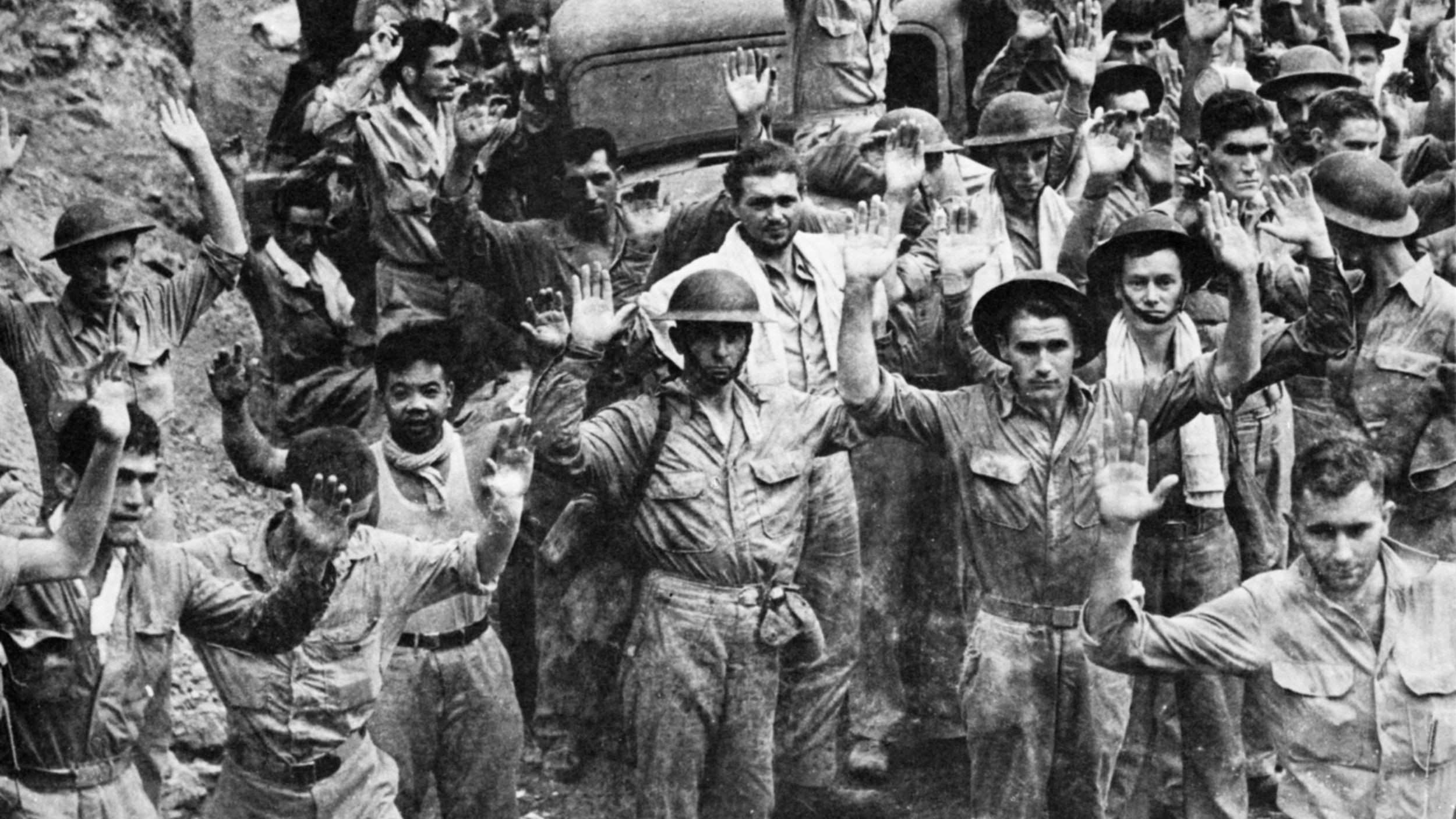

Excellent recapitulation of a very important piece of history. Crimea’s and Sebastopol’s roles to hinder Germany’s advance toward the Caucasus are often ignored. The taking back of the peninsula is even less known. Thank you for a great piece of writing, well researched and tied to high commands.